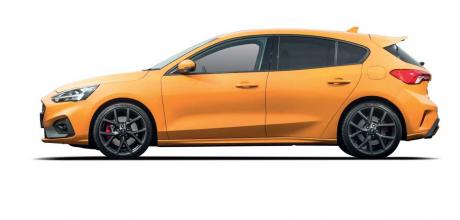Clean bowled after a 36-month innings Focus ST

You may have noticed a bit of a theme with this series. It usually celebrates a car that was once good, great or merely interesting but which tended to hang around a bit too long, by which point customers become interested in something newer and shinier. That’s not the case with the just-axed Ford Focus ST. Recently departed performance title MOTOR gave the hot Ford hatch a runner-up position at this year’s Sports Car of the Year award. It was in its pomp, a fact underscored by demand easily outstripping supply.
So why has this peach of a performance hatch dropped off the twig? Blame the current global supply issues that have strangled production to such an extent that the Australian business case pretty much collapsed. Ford had already pared the Focus range back to just the ST and ST X variants in 2022 and had taken orders for the facelifted cars, due later this year. Semiconductor supply was such that cars destined for European markets are due to be shipped with the older SYNC3 infotainment system and an 8.0-inch touchscreen, rather than the promised SYNC4 and 13.2-inch screen. Now Australia’s not getting the updated car at all, nor, come to that, its little sibling, the Fiesta ST.
Instead, Ford says it’s concentrating on high-volume vehicles such as Ranger, Everest and Puma, so it could be some time before we see another Ford hot hatch worthy of the name. That’s a shame as the ST had developed into a great driver’s car. The original ST170, based on the first-generation Focus, debuted here in 2003 carrying a rather self-conscious $37K sticker price. While it handled well and 127kW wasn’t to be sniffed at, its reedy 197Nm – less than the smaller and lighter Clio 172 – meant you needed to work it hard. That was rectified in 2005 with the second-generation Focus ST, sold here as the XR5 Turbo, which featured a 2.5-litre inline five-cylinder Volvo boat anchor up front which was gutsy enough to generate 320Nm of torque to accompany its 166kW. It sounded great but the Focus’s reputation for lithe handling was dulled a little by the weight in the nose.
Improvement arrived with the 188kW/366Nm 2.0-litre turbo four fitted to the third-generation ST in 2012, arriving after a two-year hiatus. Quicker and nimbler but with amorphous styling that lived in the shadow of its RS sibling, the ST always felt like accepting second best.
That changed with the fourth-generation car, launched in 2019. This had the best of everything: plenty of punch (206kW/420Nm) from the decently sized 2.3-litre four, playful handling, sharp styling, a choice of a six-speed manual or a seven-speed auto, and no Focus RS big brother to dull its shine. While it does lack the collectible cachet of an RS badge, having been on sale here for a mere three years, the fourthgen ST has second-tier future classic written all over it. Vale, Focus ST. You’ll be missed.
WHY NO RS?
ACCIDENTAL HERO
The ST was never slated to be the flagship. Ford was keen on a fourthgen Focus RS but emissions were an issue. A 300kW+ version of the Ford Escape’s PHEV powertrain was mooted at one point but the numbers never stacked up for such a limited production run.
AUTOMATIC FOR THE PEOPLE?
The torque converter auto adds 26kg over the weight of a three-pedal Focus ST, so should you bother? Go for the manual and you also miss out on features like lane-keep assist, which some keen drivers may view as a plus. While the auto ST is still a decent thing, if you prefer the car to do the shifting for you, Hyundai’s dual-clutch i30 N is probably a better bet. In other words, stick with the stick.

